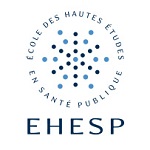Citizen science in environmental health research: A comparison with conventional approaches and creation of a guidance tool issued from the LILAS initiative
Abstract
Context: Public interest for citizen science (CS) in environmental health is growing. The goals of environmental health research projects are diverse, as are the methods used to reach these goals. Opportunities for greater implication of the civil society and related challenges differ at each step of such projects. These methodological aspects need to be widely shared and understood by all stakeholders. The LILAS initiative (acronym for "application of citizen science approaches such as LIving LAbS to research on environmental exposures and chronic risks") aimed to 1) favor a mutual understanding of the main issues and research methods in environmental health, of their stakes for different actors, but also of the requirements, strengths and limitations of these methods and to 2) identify expected benefits and points of attention related to stronger degrees of participation as part of environmental health research projects.Methods: The LILAS initiative gathered institutional researchers, academics and civil society representatives interested in environmental exposures. Five meetings allowed to collectively identify different types of environmental health research studies and reflect about the benefits, limitations, and methodological issues related to the introduction of growing citizen participation as part of such studies. An analytic table matrix summarizing these aspects was co-created and filled by participants, as a tool devoted to help stakeholders with the definition of future CS research projects in environmental health.Results: For different fields of research (e.g.: studies for assessment of environmental exposures, interventions on these exposures, quantitative risk assessment, epidemiological studies), the matrix lists expected benefits for various stakeholders, the fundamental principles of research methods and related practical constraints, but also advantages and limitations related to the use of CS or conventional research approaches.Conclusion: The LILAS initiative allowed to develop a tool which provides consolidated grounds for the co-creation of research projects on environmental exposures involving CS.
Domains
Environmental Sciences| Origin | Publication funded by an institution |
|---|---|
| Licence |



